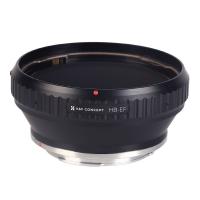How Are Light And Electron Microscopes Different ?
Light microscopes and electron microscopes are different in several ways. Firstly, light microscopes use visible light to illuminate the specimen, while electron microscopes use a beam of electrons. This fundamental difference in the type of radiation used allows electron microscopes to achieve much higher magnification and resolution compared to light microscopes.
Secondly, light microscopes are limited in their maximum magnification to around 1000x, while electron microscopes can achieve magnifications of up to several million times. This higher magnification power of electron microscopes enables the visualization of much smaller structures and details.
Additionally, electron microscopes have much higher resolution than light microscopes. The resolution of a microscope refers to its ability to distinguish between two closely spaced objects. Electron microscopes can achieve resolutions in the range of a few nanometers, whereas light microscopes are limited to resolutions of around 200-300 nanometers.
Lastly, electron microscopes require a vacuum environment to operate, as the electrons used in the imaging process can be easily scattered or absorbed by air molecules. In contrast, light microscopes can be used in regular atmospheric conditions.
Overall, the key differences between light and electron microscopes lie in the type of radiation used, magnification and resolution capabilities, and the operating environment.
1、 Magnification: Light microscope vs. electron microscope
Light microscopes and electron microscopes are both powerful tools used in scientific research to observe and study microscopic structures. However, they differ significantly in terms of magnification capabilities.
Light microscopes use visible light to illuminate the specimen and magnify it. They typically have a maximum magnification of around 1000x, although some advanced models can reach up to 2000x. This level of magnification allows scientists to observe cells, tissues, and some subcellular structures. Light microscopes are commonly used in biology, medicine, and materials science.
On the other hand, electron microscopes use a beam of electrons instead of light to magnify the specimen. This allows for much higher magnification levels and greater resolution. Electron microscopes can achieve magnifications of up to several million times, enabling scientists to observe the finest details of cells, molecules, and even individual atoms. There are two types of electron microscopes: transmission electron microscopes (TEM) and scanning electron microscopes (SEM). TEMs are used to study the internal structure of specimens, while SEMs provide detailed surface images.
The higher magnification and resolution of electron microscopes have revolutionized many fields of science. They have allowed scientists to explore the intricate structures of cells, unravel the mysteries of nanomaterials, and delve into the world of nanotechnology. Electron microscopes have become indispensable tools in fields such as materials science, nanoscience, and microbiology.
In recent years, there have been advancements in electron microscopy techniques, such as cryo-electron microscopy (cryo-EM), which allows for the observation of biological samples in their native state. Cryo-EM has provided unprecedented insights into the structure and function of complex biomolecules, leading to breakthroughs in drug discovery and the understanding of diseases.
In conclusion, while light microscopes are useful for observing larger structures, electron microscopes offer much higher magnification and resolution capabilities, allowing scientists to explore the microscopic world in incredible detail. The continuous advancements in electron microscopy techniques further enhance our ability to study and understand the complexities of the microscopic realm.

2、 Resolution: Light microscope vs. electron microscope
Light microscopes and electron microscopes are both powerful tools used in scientific research to observe and study microscopic structures. However, they differ significantly in terms of their resolution capabilities.
Resolution refers to the ability of a microscope to distinguish two closely spaced objects as separate entities. Light microscopes use visible light to illuminate the specimen, and their resolution is limited by the wavelength of light. According to the Abbe's diffraction limit, the maximum resolution of a light microscope is around 200-300 nanometers. This means that two objects closer than this distance will appear as a single blurred image.
On the other hand, electron microscopes use a beam of electrons instead of light to illuminate the specimen. Electrons have much shorter wavelengths than visible light, allowing for much higher resolution. The maximum resolution of an electron microscope can be as low as 0.1 nanometers, allowing for the visualization of extremely fine details.
In addition to resolution, electron microscopes also offer higher magnification capabilities compared to light microscopes. Electron microscopes can magnify specimens up to millions of times, while light microscopes typically have a maximum magnification of around 1000 times.
However, it is important to note that electron microscopes require a vacuum environment, which means that specimens must be specially prepared and cannot be observed in their natural state. Light microscopes, on the other hand, can observe living specimens in real-time.
In recent years, advancements in technology have led to the development of new techniques that enhance the resolution of light microscopes beyond the diffraction limit. These techniques, such as super-resolution microscopy, have allowed scientists to achieve resolutions comparable to electron microscopes while still maintaining the advantages of light microscopy, such as live-cell imaging.
In conclusion, the main difference between light and electron microscopes lies in their resolution capabilities. Electron microscopes offer much higher resolution and magnification, but require a vacuum environment and cannot observe living specimens. Light microscopes have lower resolution but can observe specimens in their natural state. However, with the advent of super-resolution microscopy, light microscopes are closing the resolution gap and offering new possibilities in the field of microscopy.

3、 Imaging technique: Light microscope vs. electron microscope
Light microscopes and electron microscopes are both powerful imaging tools used in scientific research to visualize and study microscopic structures. However, they differ significantly in terms of their imaging techniques, resolution capabilities, and the types of samples they can analyze.
The main difference between light and electron microscopes lies in the type of radiation used to visualize the sample. Light microscopes use visible light to illuminate the sample, while electron microscopes use a beam of electrons. This fundamental difference in radiation type leads to variations in resolution and magnification capabilities.
Light microscopes typically have a lower resolution compared to electron microscopes. The maximum resolution of a light microscope is around 200 nanometers, limiting the level of detail that can be observed. In contrast, electron microscopes can achieve resolutions as high as 0.1 nanometers, allowing for the visualization of much smaller structures.
Electron microscopes also offer higher magnification capabilities compared to light microscopes. While light microscopes can typically magnify samples up to 2000 times, electron microscopes can achieve magnifications of up to several million times. This enables researchers to examine samples at a much finer scale and observe subcellular structures in great detail.
Another significant difference is the type of samples that can be analyzed. Light microscopes are suitable for observing living cells and tissues, as they can be used under normal atmospheric conditions. In contrast, electron microscopes require samples to be prepared in a vacuum and often involve complex sample preparation techniques, making them more suitable for studying non-living samples, such as metals, ceramics, and biological samples that have been chemically fixed and dehydrated.
In recent years, advancements in electron microscopy techniques, such as cryo-electron microscopy, have allowed for the visualization of biological samples in their native, hydrated state. This has bridged the gap between light and electron microscopy, enabling researchers to study dynamic biological processes at high resolution.
In conclusion, light and electron microscopes differ in their imaging techniques, resolution capabilities, and sample compatibility. Light microscopes are suitable for observing living samples and have lower resolution and magnification capabilities, while electron microscopes offer higher resolution and magnification but require more complex sample preparation. However, with the development of new techniques, electron microscopy is becoming increasingly versatile and bridging the gap between the two imaging modalities.

4、 Sample preparation: Light microscope vs. electron microscope
Light microscopes and electron microscopes are both powerful tools used in scientific research to observe and study microscopic structures. However, they differ significantly in terms of their sample preparation methods.
In light microscopy, sample preparation is relatively simple and straightforward. The sample is typically fixed, stained, and mounted on a glass slide. Fixation involves preserving the sample's structure and preventing decay or degradation. Staining is used to enhance contrast and highlight specific structures or components within the sample. Once prepared, the sample can be directly observed under a light microscope.
On the other hand, electron microscopy requires a more complex and time-consuming sample preparation process. The sample needs to be dehydrated, embedded in resin, and thinly sliced into ultra-thin sections. Dehydration removes water from the sample to prevent distortion during imaging. Embedding in resin provides structural support and allows for easier handling of the sample. Slicing the sample into thin sections is crucial for electron beams to pass through and generate high-resolution images. After sectioning, the sample is stained with heavy metals to increase contrast. Finally, the sample is placed in a vacuum chamber and observed using an electron microscope.
The main advantage of electron microscopy over light microscopy is its significantly higher resolution. Electron microscopes use a beam of electrons instead of light, allowing for much smaller wavelengths and greater magnification. This enables scientists to observe ultrafine details and structures that are beyond the capabilities of light microscopy. However, the sample preparation process for electron microscopy is more time-consuming and requires specialized equipment and expertise.
In recent years, advancements in electron microscopy techniques have led to the development of cryo-electron microscopy (cryo-EM). Cryo-EM allows for the imaging of samples in their native, hydrated state, eliminating the need for extensive sample preparation. This technique has revolutionized structural biology and has been instrumental in determining the structures of complex biomolecules such as proteins and viruses.
In conclusion, light and electron microscopes differ in their sample preparation methods. Light microscopy involves simple fixation, staining, and mounting, while electron microscopy requires complex processes such as dehydration, embedding, sectioning, and staining. Electron microscopy offers higher resolution but requires more time and expertise. However, recent advancements in cryo-EM have simplified sample preparation for electron microscopy, allowing for the imaging of samples in their natural state.






































